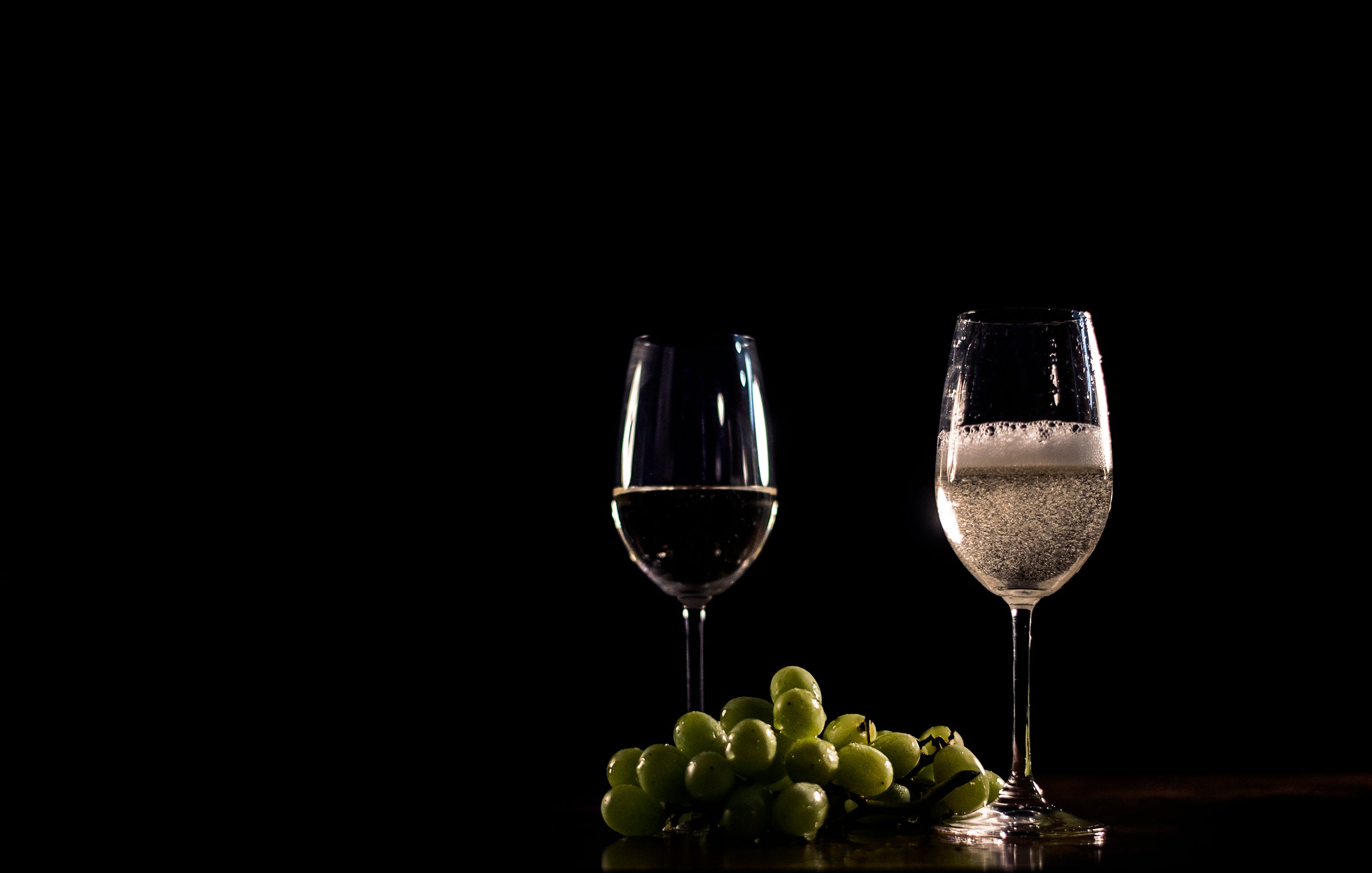Chenin, a treasure of the Loire
Chenin Blanc is a grape variety native to the Loire Valley, one of the oldest French grape varieties.
Origin of Chenin:
Chenin Blanc is one of the oldest and most prestigious grape varieties in France. It originates from the Loire Valley , in regions such as Anjou, Vouvray and Saumurois, which are today the cradles of this grape variety. Its name probably comes from Cheninier , an ancient monastery located near Tours, where the grape variety was cultivated as early as the 9th century. The exact origin of the name, however, is not entirely certain.
The first mentions of Chenin Blanc date back to the 16th century , although it is possible that traces of its existence date back much earlier. In the Middle Ages, monks played a central role in the cultivation of the vine, and it was thanks to their work that this grape variety began to spread in the vineyards of the Loire.
The rise of Chenin in France:
Over the centuries, Chenin Blanc has gained a great reputation in France, particularly in the Loire wine regions. In the 17th century , records indicate that this grape variety was already highly valued at the royal courts, particularly for its ability to produce quality wines, both dry and sweet. It is also responsible for some of the region's first sparkling wines .
Chenin is distinguished by its great versatility . Depending on growing conditions and winemaking techniques, it can produce very different wines: dry, semi-dry, sweet, even sweet, and even high-quality sparkling wines. This flexibility is one of the grape variety's main assets.
The Sweet Wine Revolution (19th century):
In the 19th century , the wine industry underwent a profound transformation with the rise of sweet wines . Chenin Blanc played a key role in the production of sweet wines in the Loire Valley, particularly in the Coteaux du Layon and Vouvray . Wines produced from Chenin Blanc are highly valued for their balance between sweetness and acidity, and their ability to age for many years.
During this time, noble rot ( Botrytis cinerea ), a beneficial mold that concentrates sugars in grapes, becomes a key factor in the production of some of the finest sweet wines made from Chenin.
The turbulence of the 20th century:
At the beginning of the 20th century , the Chenin Blanc grape variety went through a difficult period. Phylloxera , a devastating insect, decimated many vineyards in France, and winegrowers were forced to replant more resistant grape varieties, such as Chardonnay . This period was marked by a decrease in the area planted with Chenin Blanc.
However, in the 1970s and 1980s, a revival took place. Winemakers rediscovered the potential of Chenin and turned to more sustainable viticultural practices. Organic and biodynamic viticulture began to gain popularity, and Chenin Blanc, thanks to its ability to adapt well to different terroirs, once again became a sought-after grape variety.
Chenin Blanc internationally:
Although this grape variety is inseparably associated with the Loire Valley, Chenin Blanc is also very popular beyond France's borders, particularly in South Africa . Since its introduction by French settlers in the 17th century , it has found an ideal breeding ground in the climates of the Cape, where it is now the most widely planted grape variety in the country. In South Africa, it is sometimes called "Steen" and is used to produce a wide variety of wines, from dry to sweet.
On the other hand, in France , Chenin Blanc remains the star of the Loire appellations, notably in Vouvray , Savennières , Saumur and Coteaux du Layon , where it continues to produce wines of great finesse and good aging capacity.
Contemporary revival:
Today, Chenin Blanc is experiencing a real revival in France, particularly in the Loire Valley . Winemakers who are turning to more natural methods, such as sulfur-free winemaking and reduced yields, are highlighting the purity of the grape variety. Chenin Blanc is finding its place in high-end vintages, often made from old vines and cultivated biodynamically.
The diversity of wines produced from Chenin Blanc is another factor in its current success. There are dry and fresh wines, elegant sparkling wines, as well as great wines for aging that, over time, develop complex aromas and a beautiful richness.
In summary:
Chenin Blanc has a long and rich history, marked by its key role in the Loire Valley 's winemaking tradition. It has survived the ages, overcome challenges such as phylloxera, and adapted to changes in winemaking practices. Today, this grape variety is recognized as one of the noblest, capable of producing wines of great complexity and incredible diversity, whether dry, sweet, sparkling, or liqueur-like. The rediscovery of this grape variety, particularly by modern winemakers, ensures it a bright future in French vineyards and beyond.
It is a grape variety that tells a true story of resilience, diversity and passion for wine.
Characteristics of Chenin : Specifies the main traits of the grape variety, such as its natural acidity, its ability to adapt to different terroirs and to produce a wide variety of wines (dry, sweet, sparkling).
2. The main Chenin wine-growing regions in France
-
Vouvray (Loire) : This is one of the most emblematic names for Chenin, where it produces dry, semi-dry, sweet, and sparkling wines. You could talk about the historical importance of the appellation and the diversity of styles.
-
Savennières (Loire) : An appellation renowned for its dry, often complex wines produced on schist and volcanic soils. Ideal for exploring the terroir aspect of Chenin and its ageing wines.
-
Coteaux du Layon (Loire) : These are sweet, mellow wines where the Chenin reaches exceptional levels of sugar concentration and acidity. This would be an opportunity to discuss noble rot (Botrytis cinerea) and its impact on the production of sweet wines.
-
Anjou (Loire) : The Anjou region offers both dry, semi-dry, and sweet wines. It explores the diversity of styles produced from Chenin in this appellation.
3. The specificities of wines produced from Chenin in the Loire
-
Dry wines : Discuss dry Chenin wines, particularly those from Savennières or Vouvray. These are very mineral wines, often very fresh, perfect with seafood or grilled fish.
-
Sparkling Wines : Chenin is used to produce Crémants de Loire, sparkling wines produced using the traditional method. Explore the characteristics of these Crémants, their finesse, and their potential for aging in the bottle.
-
Sweet and mellow wines : Explains how Chenin produces wines with a very balanced balance between sugar and acidity, particularly wines made from noble rot such as Coteaux du Layon or sweet Vouvray.
4. The influence of terroir on Chenin
-
The role of climate and soils : You can discuss how Chenin adapts to varied soils (schist, limestone, tuffeau) and how the climate (oceanic in the case of the Loire) shapes different wine styles. Also discuss the importance of vine exposure.
-
Microclimates : Some terroirs have specific microclimates that influence the quality and style of Chenin wines. For example, some tuffeau subsoils in the Loire Valley produce particularly fresh and mineral wines.
5. The essential winegrowers and estates
-
Domaine Huet (Vouvray) : An iconic estate, renowned for its high-quality wines. You could talk about their approach to biodynamic viticulture and the importance of their vintages in the history of Chenin.
-
Domaine des Baumard (Anjou) : Known for its exceptional dry and sweet wines, this estate is another example of a winemaker who enhances Chenin in its various expressions.
-
Domaine de la Taille aux Loups (Montlouis-sur-Loire) : An important estate for sparkling and dry wines made from Chenin.
-
Domaine des Roches Neuves (Saumur-Champigny) : Discusses the approach of winemaker Thierry Germain, who works Chenins on Saumur terroirs using organic methods.
6. Winemaking methods specific to Chenin in France
-
Oak vs. Stainless Steel Vinification : Explains the difference between winemaking methods for Chenin. Stainless steel tanks help retain freshness and acidity, while oak barrels add complexity and roundness.
-
Malolactic fermentation : Many Chenin wines undergo this fermentation, which gives them a rounder, less acidic texture. It's a technique used to balance the liveliness of the grape variety.
7. Food and Chenin pairings in the Loire
-
Dry Wines : Offers pairing suggestions for dry Chenin wines, such as a dry Vouvray with fish, seafood, or roast poultry.
-
Sweet and smooth wines : Gives pairing ideas for sweeter wines, for example Coteaux du Layon with blue cheese or tarte tatin.
-
Sparkling wines : Suggested pairings for Crémants de Loire, perfect as an aperitif or with seafood.
8. Chenin in the future of French viticulture
-
Transitioning to Sustainable Viticulture : Discusses the role of Chenin in the booming organic and biodynamic viticulture in France.
-
Current Trends : Discusses new trends in Chenin production in France, such as the emphasis on increasingly natural wines and the emergence of small producers rediscovering forgotten terroirs.



